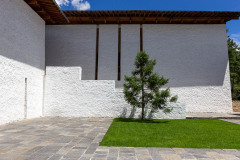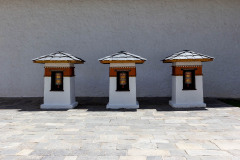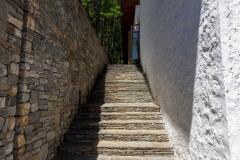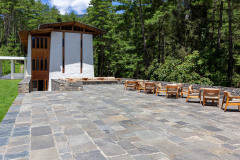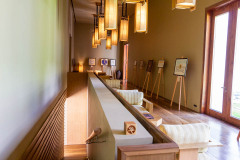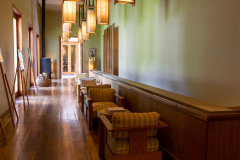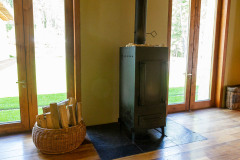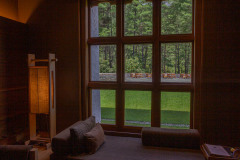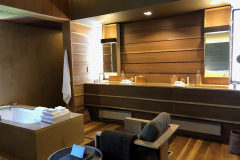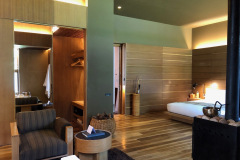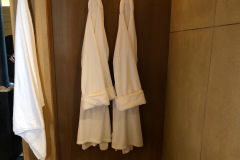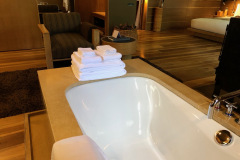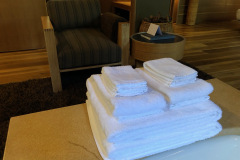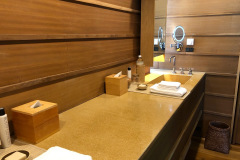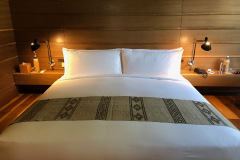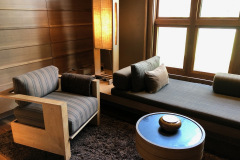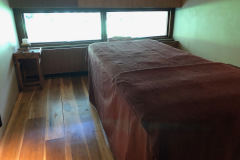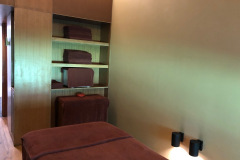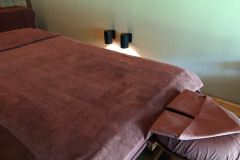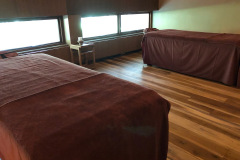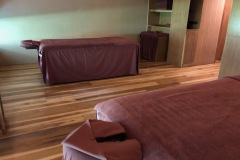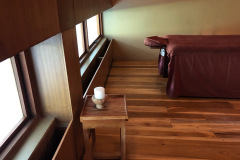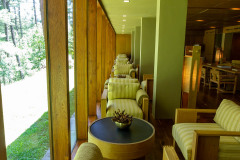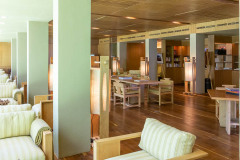TL;DR;
A rather dull property that I don’t recommend. For the same price, the Six Senses hotels are considerably more inviting and for considerably less money you can stay at the UMA properties which area also more inviting.
Introduction
This week’s article is a review of a hotel property in Thimphu that I just haven’t had the chance to visit until just recently. I know about the properties under the name of Amankora because we have had inquiries and some guests have stayed in the Gangtey property. I’ve never visited the property because the inquiries are less due to the extremely high price and I assumed that at such a high price the property must be spectacular. Given that I have been running around learning the great stories of the new Six Senses properties,
I know about the Amankora properties in Bhutan because we are often providing quotations to some of our luxury travelers who inquire about this property, but I’ve not personally visited the site…after all, given the price it must be spectacular! Towards the end of my stay this, I said that I need get up to Amankora so that I can compare the hotel to the new Six Senses properties that I’ve been visiting this trip which are in the same ballpark price range.
Photo Gallery
As usual, I will put the photo gallery here but there are still things to read below.
The Arrival
We made an appointment to drop in for a visit and headed up late morning. The drive up to Amankora in Thimphu takes you up a long hill towards an area canned Motithang, which in Dzongkha means meadow of pearls, suggesting this is a very high-end location in Thimphu. It is actually a very nice place where the Takin Preserve, the BBS towers, and the Royal Family Palaces are located. Leaving the main road, we drove for about 3 to 4 minutes through a beautiful well surfaced road through a nice forest. Unfortunately, this turned out to be the highlight of the visit.
At the end of the road we reached a huge stone building with narrow and very tall windows designed to resemble a dzong structure. There is nothing here suggesting that this is a hotel but instead you would likely be guessing that it is some official government building.
We parked the car and spoke to somebody who pointed us in the direction of the entrance, but the designers have done a good job at hiding things like the entrance doors and the stairs. It actually took us several minutes to actually find the steps up to the main arrival area. I assume that if it were an actual guest that was arriving then the hotel staff would appear at the parking area or the guide would be with you showing the stairs to the main arrival area. However, reading some of the reviews on this property and even speaking to the guides, the local tour guides and drivers seem to be unwelcomed at this property and are asked to simply drop the guests.
Lobby
Like many of the newer style hotels, there is no real lobby like in a typical hotel elsewhere in the world. There was a very large, but dim, area where people can sit around tables waiting for the check-in formalities to be completed. At the far end of this “waiting” area was the dining room but I didn’t take any photos of the dining because I was expecting to be shown the dining room as part of my tour.
Once our host arrived, we exchanged greetings and business cards and we headed off to view a room. We talked through a massive corridor with a woodstove and some seating places with pictures of scriptures written in Dzongkha. The photos did not work out well because the hall is quite dark. We moved into the building with the rooms and the halls were completely shocking… it really does feel like a massive dzong. I was looking forward to seeing what the rooms were like.
Rooms
Entering the door of the room, I had to stop for a few few seconds because it was so dark inside that it took time for my eyes to adjust. The room itself was a very good size but even on this bright and sunny day the amount of light coming through the windows was incredibly low. We had no choice but to get some of the lights switched on to get a better look. I gave my eyes a couple of minutes to adjust and then started looking around the room to get an idea of what is provided.
The low incoming light from the windows (and even the lamps) combined with the dark wood finishes, the dark brown chair fabric and the dark brown towels means that this is a very dim looking room. Although my camera exposure was adjusted to make the room look normal, you can tell it is dark by comparing to the windows which have been completely over exposed.
The bathtub is in the open, which is a popular placement in some of the high-end properties here but unlike other properties, there is not going to be much of a view; you have just the very narrow and tall window so you are likely to see a few trees. In the corner behind a glass door is a shower and hiding behind a sliding wooden door is a small room with the toilet. My impression of the toilet is that it would be sort of like being in a small outhouse. One review from TripAdivsor suggested that the toilet room itself is very cold during the winter but I can’t comment about that.
The room is configured with a single large king-sized bed, but this can be converted into a pair of twin beds if desired. The day bed near the window can be converted into a 3rd bed if it is a family traveling with one child. If guests are traveling with two children, then you would have no choice but to take a second room at this property.
The open concept bathing actually felt a bit awkward because there is no way around it. In many of the high-end hotels that I visit, the open concept bathing area can usually be closed off through some sliding doors if the guest wishes but here there was no choice.
Although the property is doing some environmental initiatives such as adopting the stream beside the hotel (I saw a stream in Bumthang with the Amankora adoption sign on it), they could be doing much more like many of the other hotels. The room is filled with plastic bottles for water, shampoo, and body lotion. There are plenty of other hotels in Bhutan who have said no to plastic and are filtering their own water and providing amenities in reusable glass or stone containers.
Spa and Library
After visiting the room, we moved onto the spa area. The reception area of the spa is yet another small and dark room. It was small enough that I couldn’t really get a photograph of it. We moved into one of the treatment rooms and again I tried to get the photos, but everything is dark. The light entering the treatment room is low, the wood is dark, and everything is covered in dark brown towels making it a very dark place. I didn’t look at the spa menu so I can’t comment on what types of spa treatments the provide here.
From the spa we moved to a library. Surprisingly this was not dark and uninviting like the rest of the hotel. The larger windows along the edge of the forest seem to have collected enough light and the furniture was less dark brown. In this room they hold some Buddhism teachings and guests can relax here as well.
Outside of the library the host described adopted stream and pointed out that there is a 15-minute walk through the forest to the takin preserve.
Food
We were then walked back towards the main entry area but unfortunately, I wasn’t able to stay for tea due to an appointment that we needed to reach. This means of course that I did not get the chance to see the dining area or see what types of food is available.
I decided to turn to TripAdvisor to see some reviews to get an idea of what is happening with the food since I missed the dining room. A number of the guests complained about the food because they were offering only International and Thai cuisine when the guests really wanted Bhutanese dishes.
Near the parking area it is pointed out that there is a small archery area where the guests can try out both archery and khuru (darts) as well as being able to use the cycles provided by the hotel. We asked about using the cycles to move to the next hotel in Paro or Punakha and they said that it would be possible.
Conclusion
To be fair, there are a lot more positive reviews on TripAdvisor than negative ones. I can’t support or deny the positive reviews but as I read through the negative ones, I clearly understood their concerns because they matched my own observations. The positive reviews usually talk about the great experience that they have had in all of the Amankora properties, especially when the guests start in Thimphu. So perhaps if you want to stay in Amankora, start with Thimphu because the other properties are much better.
I honestly found this hotel to be dark and uninviting. The host showing me around was less interested in trying to promote the hotel to me and instead were more interested in talking with my driver. In the other high-end hotels that I visit, the hosts are always explaining to me what they do with the guests to make their stay outstanding and what makes their hotel different. My tour of this property was about as exciting as a typical 3-star hotel where I was shown the rooms but the story behind the hotel and the guest experience was left to my imagination.
If a guest inquired about staying Amankora, I would likely suggest that they instead stay in Six Senses which will be the same price in 2020. The Six Senses properties are brighter and located with an amazing view. When you reach the Six Senses properties, you say “WOW”; when you reach this property you say “Turn on the lights please because I can’t see”.
Are the other Amankora properties better? I can’t actually answer this question since I have not visited them but there is hope based on what I see in TripAdvisor. I promise that I will make a good attempt next summer to reach at least one of their other properties and write about it.


